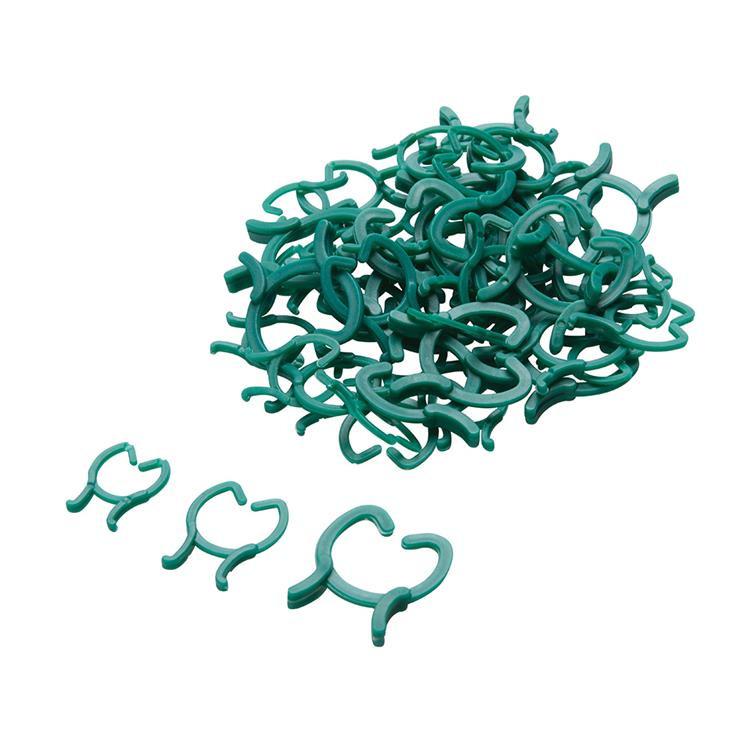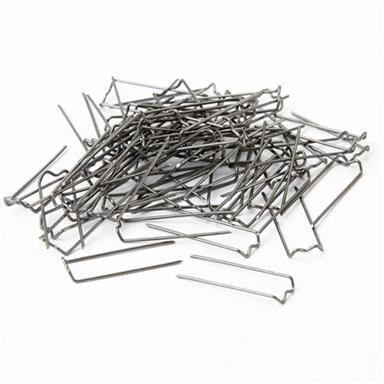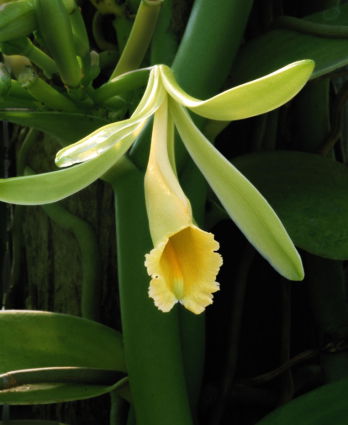
Vanilla planifola. Copyright: The American Orchid Society (AOS).
Contents
- Top Tips
- Light, Water, Humidity & Fertilisation
- Dormancy Care & Achieving Flowers
- Common Issues
- Origins, Temperature, Propagation, Repotting & Toxicity.
Need the answer to a specific plant query? Book a 1-to-1 video call with THE HOUSEPLANT DOCTOR™, the website's friendly author, to overcome and address your niggling problem! Available on iMessage, WhatsApp, Facebook Messenger & more.
Top Tips & Info
- Care Difficulty - Easy to Moderate
- Vanilla Orchids are best suited in bright, indirect settings with up to minimal sunlight. Never place a specimen in the excessive sun or within three metres of an operating heat source due to the heightened risk of dehydration.
- Maintain evenly moist soil, allowing the top third to dry out in between waters. Reduce hydrations further during the autumn & winter to increase the chance of flowers.
- Supplement with an Orchid-labelled fertiliser once a month, via foliar or liquid feed.
- Scroll down to 'Dormancy Period & Achieving Flowers' for information about their blooming process and all-important winter care.
- As Vanilla Orchids take several years to produce flowers, you'll have to make do with a foliage-only specimen. You're most likely able to achieve flowers once the vines surpass 3m in length.
- Repot every three years using an Orchid Bark & a slightly larger transparent pot, during the spring.
- Keep an eye out for Mealybugs that'll locate themselves in the cubbyholes of the stems & foliage.
Location & Light - 🔸🔸
Vanilla Orchids do best in well-lit environments without excessive sunlight or dry air. Although they can withstand short periods of direct light, it's essential to keep them sufficiently hydrated to downplay the risk of dehydration and sun-scorch. The ideal setting would be within a few metres of an east or west-facing window, or in a setting that a newspaper can be read without the use of artificial lighting. Those situated in darker areas will be at risk of root rot, along with the minimal chance of producing blooms.
Water - 🔸
During the spring and summer months, be sure to keep the soil relatively moist, allowing the top third to dry out in between waters. Reducing irrigations is necessary throughout the swing of autumn and winter to force the specimen into its dormancy. Under-watering symptoms include sudden flower loss, wilted leaves, deformed growth and a gradual decline in health. Never allow the intense sun or forgetfulness to take over, as both will result in a premature flower loss and a weakened specimen. Over-watering symptoms include lower yellowing of leaves, a rapidly declining stem, flower loss and a rotten base. These issues are commonly down to either too much soil moisture, an incorrect soil medium, too little light, or foliage that has allowed to remain wet for long periods.
Humidity - 🔸🔸🔸
Create a humidity tray to provide a moist and stable environment for your plant. If the surrounding saturation is too low or the heat too high, its juvenile leaf-tips may start to brown over and curl, especially in direct sunlight. Gently hose the foliage down from time to time to hydrate the leaves and keep the dust levels down.
Fertilisation - 🔸🔸
Orchids have open stomata, meaning that fertilisation can be achieved via foliar feeds. Spray the solution onto the leaf's topside to provide the two critical ingredients for good quality blooms (nitrogen & potassium). Although typical soil-borne fertilisers will still benefit its health, only the root caps will absorb the nutrients, meaning that excess fertiliser salts may build up after a while. Click on this link and scroll down to the 'Orchid Fertilisers' section for our recommended brands and products!
 As the juvenile growths mature, they'll produce aerial roots which will attach to anything nearby. If you're interested in training your specimen to grow up a moss pole or trellis, scroll down to the 'Maintenance' section.
As the juvenile growths mature, they'll produce aerial roots which will attach to anything nearby. If you're interested in training your specimen to grow up a moss pole or trellis, scroll down to the 'Maintenance' section.
Common Issues with Vanilla Orchids
Directly pinpointing yellow leaves is quite hard due to the many different issues that could be at fault. Problems include watering-related abuse, too much or too little light, and fertilisation issues. If you'd like to speak to ukhouseplants in regards to this issue, be sure to book a 1-to-1 video call for more detailed advice.
Root or basal rot is a common issue with specimens sat in too moist or waterlogged soil for long periods. Symptoms include rapidly yellowing leaves, stunted growth and a rotten brown base. Take the plant out of the pot and inspect health below the soil line. If the roots sport a yellow/silver tinge, you're good to go, but if they're brown and mushy, action must be taken immediately. More information about addressing root rot can be found on this link.
A lack of flowers is caused by either immaturity or an insufficient dormancy period. It'll take several years for the specimen to flower, as most will only produce a bloom once the vine reaches over 3m. If your specimen is several years old, reduce the temperature by a couple of degrees over the autumn and winter months, along with fewer irrigations, to provide a well-served dormancy period.
Large quantities of aerial roots that engulfs the vines shouldn't cause concern. This is a natural part of maturity and actually acts as a way to speed up the process of cuttings. In some cases, it could be a case of being potbound - scroll down to 'Repotting' for more information on transplantation.
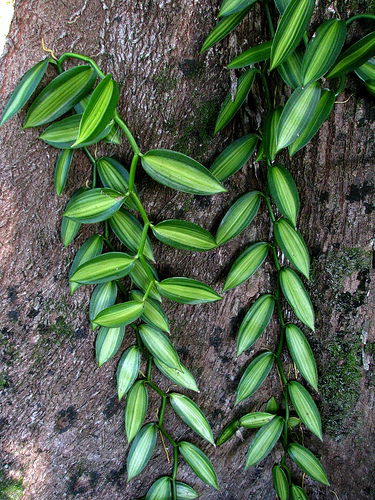 Vanilla Orchids can grow at extortionate rates, meaning that a larger trellis or frame is needed to house its juvenile growth. Copyright: FineGardening Magazine.
Vanilla Orchids can grow at extortionate rates, meaning that a larger trellis or frame is needed to house its juvenile growth. Copyright: FineGardening Magazine.
Origins
Vanilla is a genus of around one hundred and thirty species, with natural distributions over the Americas, central Africa and Eastern Asia. The most popular Vanilla species, V. planifolia, was first described in 1811 by George Jackson, using the Latin word for 'flat' that refers to its flat-leafed foliage.
 The Distribution of Vanilla planifolia.
The Distribution of Vanilla planifolia.
Temperature
12° - 27°C (54° - 80°F)
H1b (Hardiness Zone 12) - Can be grown outdoors during the summer in a sheltered location with temperatures above 12℃ (54℉), but is fine to remain indoors, too. If you decide to bring this plant outdoors, don't allow it to endure any direct sunlight as it may result in sun-scorch and dehydration. Regularly keep an eye out for pests, especially when re-introducing it back indoors.
Spread
When grown indoors, you can expect the specimen to grow upwards of 3m (10ft) in vine length. Naturally-occurring specimens have been known to surpass 90m (295ft), when grown along a tree or structure. You can expect up to 15cm (6 inches) of new growth per season of twelve months.
Maintenance & Trellis/Support Training
Remove yellow or dying leaves, and plant debris to encourage better-growing conditions. While pruning, always use clean scissors or shears to reduce the chance of bacterial and fungal diseases. Never cut through yellowed tissue as this may cause further damage in the likes of diseases or bacterial infections. Remember to make clean incisions as too-damaged wounds may shock the plant, causing weakened growth and a decline in health.
Trellis/Support Training
You'll know pretty quickly that your Orchid will outgrow its structure, meaning that either pruning the leading growths or training the vine around the existing structure further is needed. If you decide to prune the vine's, this can be doubled up to be taken as vine cuttings - scroll down to the following section to learn more. For those wanting to train the vine, weave the loose vines between the structure in the lesser-foliaged area, so that the leaves don't start fighting over the light too much. If, however, you're thinking of creating a new structure (a moss pole or larger trellis), you may have to repot the specimen to plant the new structure's base into the compost firmly. This is best done in the spring or summer months, when the plant is still actively growing. Never remove the soil from the roots and use this as an opportunity to repot the plant into the next-sized transparent Orchid pot. You can clip the vines onto the new trellis (pictured below) using 'Silverline Hooks', or via 'German Pins' for moss or sphagnum poles.
N. B. - It's also worth-while to mention that you shouldn't pull roots that have attached to wooden frames (pictured above) as the risk of damaging the roots and overall plant is high. In this circumstance, it's best to purchase a new wooden trellis to place behind the pre-existing one.
Propagation
Via Seed & Vine Cuttings.
Seed Propagation (Very Difficult) - Obtaining and sowing of seeds is both problematic and near-impossible without the correct equipment. Sow on a seaweed-based agar in an enclosed transparent tub on some bottom-heat (25℃, 77℉). Do not open the container until the seedlings are around two inches in height with adequate roots. Pour water into the agar to loosen it off the roots, and pot them up into 5cm (2 inches) pots with Orchid Bark. Maintain high humidity and bright indirect light to alleviate the severity of environmental shock, which can be achieved using a pebble tray. Follow the care requirements mentioned at the top.
Vine Cuttings (Easy) - Choose the healthiest stems that house several root strands. Cut an inch (3cm) below the rooted node, so that the cutting has at least three nodes in total - the bottom for roots, and the top two for leaves. Use an Orchid-labelled potting mix and 7cm (3 inch) pot, placing the bottom third of the cutting into compost, so that the roots are fully submerged below the soil line (pictured below, blue line). Try not to cover the actual foliage with soil as this will harm its light-capturing efficiency, along with higher rates of rotting. Water the specimen once the top inch dries out, along with introducing a pebble tray to improve humidity levels and decrease transpiration. Situate it in a bright, indirect setting with temperatures above 18°C (64°F). Actively remove any yellow or rotten debris to present a healthier environment; after three weeks of substantial foliar growth, treat it as an adult specimen using the information mentioned above.
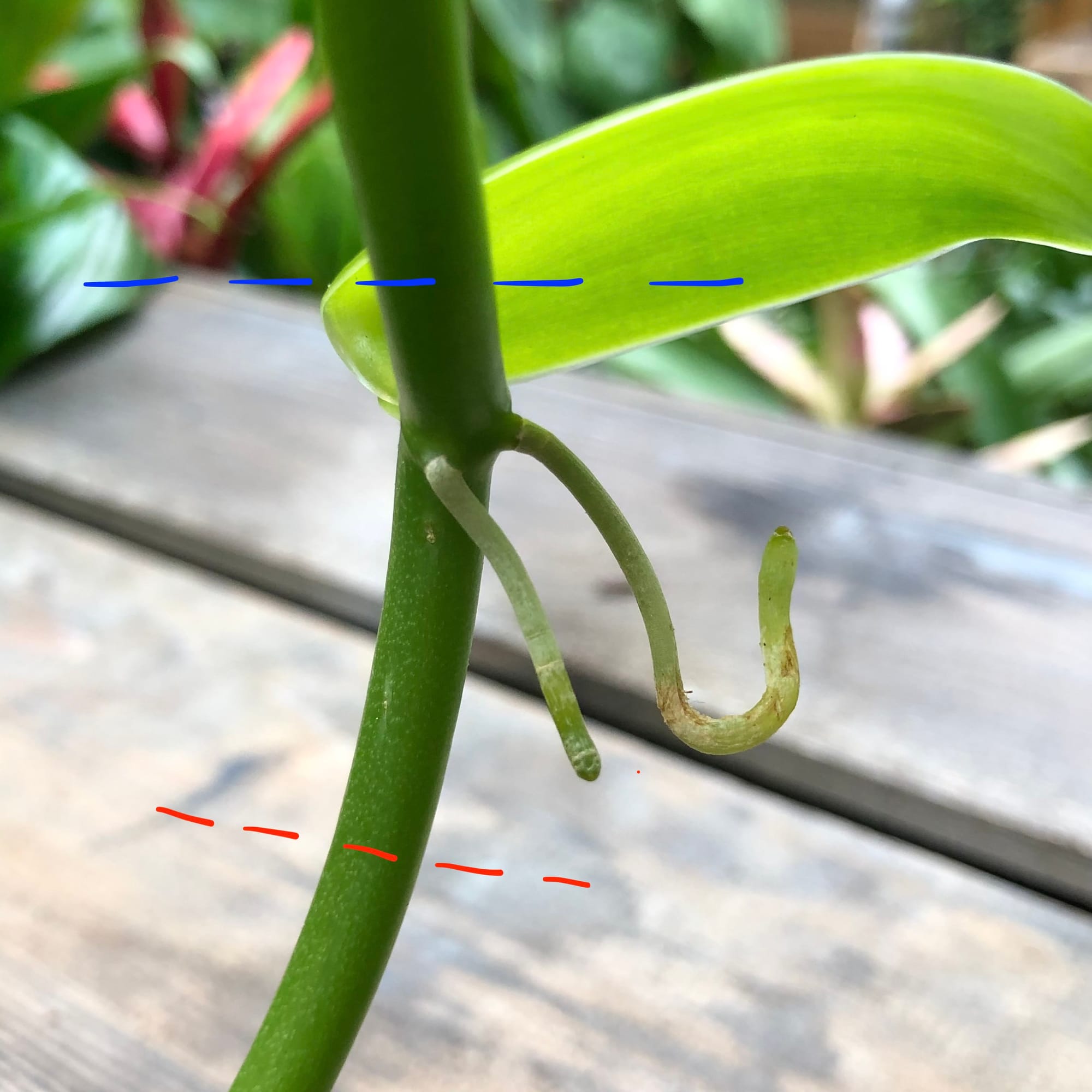 Cuttings are best taken when small roots develop along the nodes. Red - The distance to prune the base of the cutting from the roots. Blue - The soil line, with anything below being submerged in the soil.
Cuttings are best taken when small roots develop along the nodes. Red - The distance to prune the base of the cutting from the roots. Blue - The soil line, with anything below being submerged in the soil.
Flowers
Achieving a show of blooms is difficult for the first few years, as Vanilla Orchids only send out a flower spike once the vines hit at least 3m (10ft). Once maturity is reached, the quality of its dormancy period will help the chance of a bloom. It's best to provide a cooler climate, still with bright light and temperatures above 14°C (57°), but with less frequent watering to rest the specimen well during the autumn and winter. Your Orchid may stimulate a flower spike at the turn of spring once the natural temperatures increase with the longer hours of natural delight per day.
Each short spike can hold several flowers and developing buds, with the individual bloom only lasting one or two days. The overall show can span three weeks or longer, developing cluster-like groups of creamy-white flowers (pictured at the top).
Repotting
Infrequent transplants are the best approached to successfully growing Vanilla Orchids, as excessive root disturbance or the incorrect potting mix/pot can both cause issues of weakened health and even death.
Repot every three years (& when not flowering) in the spring using Orchid Bark and the next sized pot with adequate drainage. Don't worry if you snap the Velamen (white spongy epidermis) that covers the roots as it'll re-fuse again within the following few weeks. Hydrate the plant 24hrs before tinkering with the roots to prevent the risk of transplant shock. Click here for a detailed step-by-step guide on transplantation, or via this link to learn about repotting with root rot.
Pests & Diseases
Keep an eye out for mealybugs, spider mites, scale, thrips & root mealybugs that'll locate themselves in the cubbyholes and undersides of the leaves, except for the latter in the soil. Common diseases are root rot, leaf-spot disease, rust, mosaic virus (brown or purple spots on the leaves), black rot, botrytis petal blight, powdery mildew & southern blight - click here to learn more about these issues.
Toxicity
Partially poisonous by consumption of pets and humans - if high quantities are eaten, it may result in vomiting, nausea and a loss of appetite.
Retail Locations
Online Stores.
Book a 1-to-1 Call with THE HOUSEPLANT DOCTOR™
If you need further advice with your houseplants, book an advice call with ukhouseplants' friendly and expert writer today! This can be done via a video or audio call on most apps, including Facebook, FaceTime & Skype. A ten-minute call costs £5.99 (US$7), or £15.99 for thirty minutes. You can ask multiple questions, including queries on plants, pests, terrariums, repotting advice and anything in between. Please consider supporting this service to keep ukhouseplants thriving!
